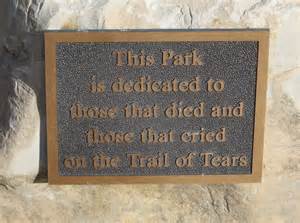by Miriam E. Waters
The U.S. Army corporal prepared to mount his horse. He performed a quick check of the animal before taking the saddle. The blanket, worn thin from months of riding, sat squarely on the mare’s back. The saddle was in place and cinched so that it was snug on the horse.
The U.S. Army corporal prepared to mount his horse. He performed a quick check of the animal before taking the saddle. The blanket, worn thin from months of riding, sat squarely on the mare’s back. The saddle was in place and cinched so that it was snug on the horse.
He noted with dismay the jutting ribs of the mare. Half rations for both man and beast had reduced them to mere bags of bones. It was a wonder that she was able to continue to carry him. He was thankful, however, that he was not compelled to walk as were the Cherokees on this forced relocation to Indian Territory.
As an Army conductor, it was his duty to shepherd those marching along the trail that led to their new home. He was familiar with the privation all suffered. Lack of adequate food, clothing, and shelter took a heavy toll on the tribes he ferried.
They were approaching an especially difficult part of the trail. The Cherokees called it Nu na da ul tsun yi, “the Place Where they Cried.” It was here that many white settlers witnessed the silent, stoical faces of the people as they passed through their ancestral lands along the “Trail of Tears.” The tears were found not on those being forcibly relocated, but on the cheeks of some witnesses to the death march.
The conductor swung up into his saddle. He took his position at the rear of the column of unfortunates and began to prod them onward.
One very old woman was near to the end of the group. The conductor could see that she was struggling to keep up with the others. A younger woman had wound a leather thong around her waist and tied it to the older woman. The women were bound together, step matching step as they crossed the rough terrain.
The conductor watched as the younger woman sought to encourage her elder first with soft words and then a more strident tone. The old woman continued to slow and finally collapsed into the mud.
The corporal rode alongside the women. “Agayáli unitsi igáyiditlá anigisdi,” “Old mother, forward,” the conductor begged in his rudimentary Cherokee. He received no response from the old woman.
Putting steel into his voice that he did not feel, the conductor commanded the younger woman “igáyiditlá anigisdi,” “forward.” She stared into his eyes as she untied the thong from around her waist and let it drop into the mud. Turning his horse’s head he motioned her on as they left the old woman to die where she fell.
 |
| Click HERE to View Wikipedia's Entry on the "Trail of Tears" |
No comments:
Post a Comment
Thank you for taking the time to offer suggestions for improving the LFBC Good Works Ministry blog.